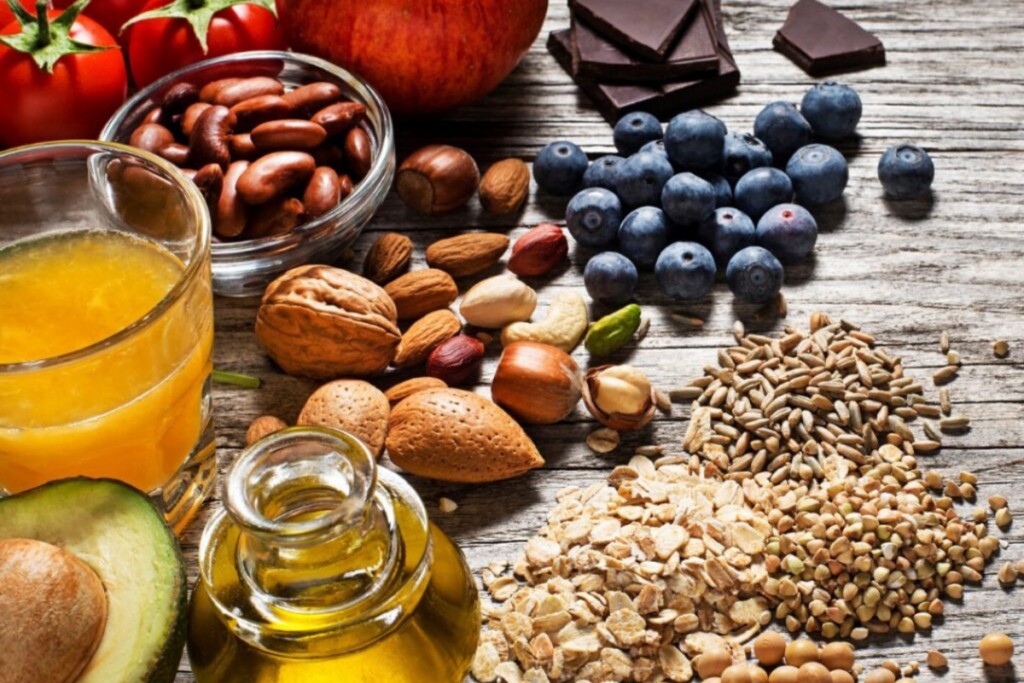Ever wondered how you get all those wrinkles? Those annoying crow’s feet at the corners of your eyes? Or those laugh lines around your mouth?
Sure, these things are but part of the normal aging process. But what causes aging anyway? And is there anyway to retard it?
In biological systems, the normal processes of oxidation are what lead to aging. Oxidation causes the production of substances called free radicals which are highly reactive.
These free radicals can readily react with and damage other molecules. Note that it says “molecules” so that means free radicals don’t make the distinction between foreign bodies and healthy cells.
And when free radicals start attacking the body’s own cells, you can guess what the results are – Aging.
If only there was a way to get rid of those harmful free radicals…
Well, have we got good news for you? Free radicals are natural enemies of antioxidants. The function of antioxidants is to destroy harmful free radicals, counteracting the damaging of tissues and in effect, treating aging or causing its retardation.
Antioxidants are commonplace in nature. In fact, antioxidants are abundant in more common vitamins such as retinol or Vitamin A, ascorbic acid or Vitamin C, tocopherol or Vitamin E, and selenium.
They can be nutrients (vitamins and minerals) as well as enzymes (proteins in your body that assist in chemical reactions).
Antioxidants are believed to play an important role in preventing the development of such chronic illnesses as heart disease, stroke, cancer, Alzheimer’s disease, Rheumatoid arthritis, and cataracts.
Although antioxidants cannot completely rid our bodies of free radicals, they can however work to retard or minimize the damage caused.
Antioxidants block the process of oxidation by neutralizing free radicals. By neutralizing, they themselves become oxidized. For this reason, our bodies are always in need of a constant source of antioxidants.
How antioxidants work is a two-way process. First is the chain-breaking. This is where the antioxidant comes in to break the chain reaction of free radicals turning other molecules into free radicals like them. Chain-breaking is also called Stabilization.
The other aspect is more on the preventive side. Antioxidant enzymes like superoxide dismutase, catalase, and glutathione peroxidase prevent oxidation by reducing the rate of chain initiation.
This time, instead of waiting for the free radicals to make a long chain of free radicals, antioxidants scavenge initiating radicals and destroy them before oxidation is set in motion.
Thus, aging is delayed and not only that, diseases and other illnesses caused by harmful free radicals are avoided.
Antioxidant Rich Foods
Sometimes the best antioxidant rich foods can be the most unexpected. Blueberries may be the poster children for antioxidant rich foods but what little of us know is that the humble bean may be an antioxidant powerhouse candidate.
A new study suggests that beans may well join the antioxidant rich foods family that includes the likes of berries, spices, and potatoes.
To date, the largest and most advanced analysis of the antioxidant rich foods shows that disease-fighting antioxidants may be found in the most unlikely fruits and vegetables.
Beans, artichokes, and even Russet potato can be rich antioxidant powerhouses as well.
Researchers particularly found that small red beans are among the top antioxidant rich foods in the bean category.
In fact, they were shown to contain more disease-fighting antioxidants than both wild and cultivated blueberries combined.
Blueberries have always been known to contain a rich amount of antioxidants and have been heralded in recent years of its high antioxidant content. With this new study however, it looks as though the small red bean is snatching away the spotlight.
Other antioxidant rich foods that the study focused on include nuts and spices, such as ground cloves, cinnamon, and oregano.
What kept these foods away from the antioxidant-consuming public for long is that they are generally consumed in much smaller amounts than fruits and vegetables.
The study used updated technology to assess the antioxidant content of more than 100 foods, including fruits, vegetables, cereals, breads, nuts, and spices.
Each food was analyzed for antioxidant concentration and ranked according to antioxidant capacity per serving size.
Cranberries, blueberries, and blackberries were ranked highest among the fruits studied. Beans, artichokes, and Russet potatoes were tops among the vegetables.
In addition, pecans, walnuts, and hazelnuts were the winners in the nut category, and ground cloves, cinnamon, and oregano were the top three antioxidant rich foods in the spice category.
However, researchers noted that the total antioxidant capacity of antioxidant rich foods does not necessarily reflect their potential health benefits. It seems that a big factor in the health benefit of antioxidants is what happens in the digestion and absorption process.
In recent years, antioxidant rich foods have been credited with helping prevent and even cure a majority of diseases which are said to have been caused primarily by harmful free radicals that attack healthy, normal cells.
By destroying these free radicals, antioxidants not only stop the free radical chain reaction but repair damaged cells as well.
Antioxidants have been linked to the treatment of such disorders as cancer, heart disease, Alzheimer’s disease, and Parkinson’s disease.
Camille McClellan, MD, DNM, MBS
Naturopathic practitioner
McClellan Natural Health, Wellness & Nutrition
Free Naturopathic/Homeopathic Consults Available
Naturopathic practitioner
McClellan Natural Health, Wellness & Nutrition
Free Naturopathic/Homeopathic Consults Available

